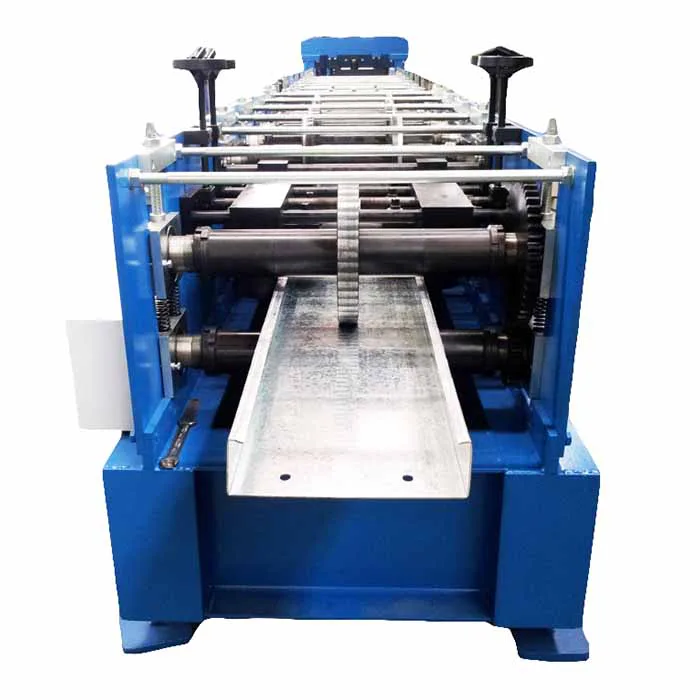
Precision Engineering- Understanding the Mechanics of Metal Curving Machines
- By:Metmac
- 2024-05-08
- 189
Precision Engineering: Delving into the Mechanics of Metal Curving Machines
Introduction
Precision engineering lies at the heart of metalworking, where intricate machinery transforms raw materials into complex and functional components. One such machine that plays a pivotal role in this process is the metal curving machine. Understanding the mechanics of these machines is crucial for engineers and professionals seeking to optimize their performance and achieve the desired precision in their metal bending operations.
Principles of Metal Curving
Metal curving machines rely on the principle of bending moment to deform metal sheets or profiles. The bending moment is the product of the applied force and the distance from the point of application to the neutral axis of the material. By carefully controlling this bending moment, the machine can achieve precise bends with minimal distortion or damage to the metal.
Machine Components
The primary components of a metal curving machine include:
– Frame: A rigid structure that supports all other components and withstands the bending forces.
– Dies: The tooling that shapes the metal sheet during bending. Dies can be custom-designed to produce specific bend radii and angles.
– Clamping System: Holds the metal sheet securely in place during the bending process, ensuring accurate and uniform bends.
– Hydraulic System: Provides the power to generate the bending force and control the movement of the dies and clamping system.
Types of Metal Curving Machines
Depending on the bending technique employed, metal curving machines can be classified into several types:
– Press Brakes: Use a punch and die to bend metal by applying pressure.
– Roller Benders: Employ a series of rotating rollers to gradually curve the metal.
– Hydraulic Press Brakes: Utilize hydraulic force to deliver precise and controllable bending.
– Rotary Benders: Bend metal continuously by rotating a cylindrical mandrel.
Factors Affecting Bend Quality
The quality of the bends produced by a metal curving machine is influenced by several factors:
– Material Properties: The thickness, strength, and ductility of the metal sheet affect the bending process.
– Bend Radius: The radius of the bend determines the amount of material deformation and the risk of cracking.
– Tooling: The sharpness and condition of the dies and mandrels directly impact the bend quality.
– Machine Calibration: Proper calibration ensures accurate and consistent bending results.
Applications of Metal Curving Machines
Metal curving machines find applications in various industries, including:
– Aerospace: Bending aircraft components such as wings, fuselage, and landing gear.
– Automotive: Manufacturing body panels, chassis, and exhaust systems.
– Construction: Fabricating structural elements, roofing, and siding panels.
– Appliance Manufacturing: Producing components for refrigerators, washing machines, and dryers.
Conclusion
Precision engineering is essential for the design and operation of metal curving machines. Understanding the mechanics of these machines, including the principles of bending moment, machine components, and factors affecting bend quality, empowers engineers to optimize their performance. By leveraging precision engineering techniques, industries can produce complex and precise metal components for a wide range of applications, contributing to innovation and efficiency in various fields.
-
Metal Sheet Forming Machine: The Engine of Modern Fabrication and the METMAC Standard
2025/12/30 -
Laser Cutting Machine for Steel Plate: Precision Redefined for Modern Fabrication
2025/12/30 -
Metal Curving Machine: Shaping Strength with Precision and the Art of METMAC Engineering
2025/12/30 -
Shear Metal Cutting Machine: Precision, Power, and the METMAC Standard
2025/12/30
-
Advanced Sheet Metal Rolling, Laser Cutting, and Folding Machines for Precision Fabrication
2025/10/31 -
High-Performance Sheet Metal Bending and Cutting Machines for Modern Fabrication
2025/10/31 -
High-Quality Sheet Metal Equipment for Sale: Efficient Solutions for Modern Manufacturing
2025/10/31 -
High-Performance Sheet Metal Equipment for Sale: Forming and Shearing Solutions for Modern Fabrication
2025/10/22
-
A Guide to the Latest Innovations in Sheet Metal Folding Machines
2024/11/29 -
Key Features to Consider When Investing in a Sheet Metal Folding Machine
2024/11/28 -
Enhancing Precision with Advanced Sheet Metal Folding Machines
2024/11/27 -
How to Choose the Right Sheet Metal Folding Machine for Your Workshop
2024/11/26







